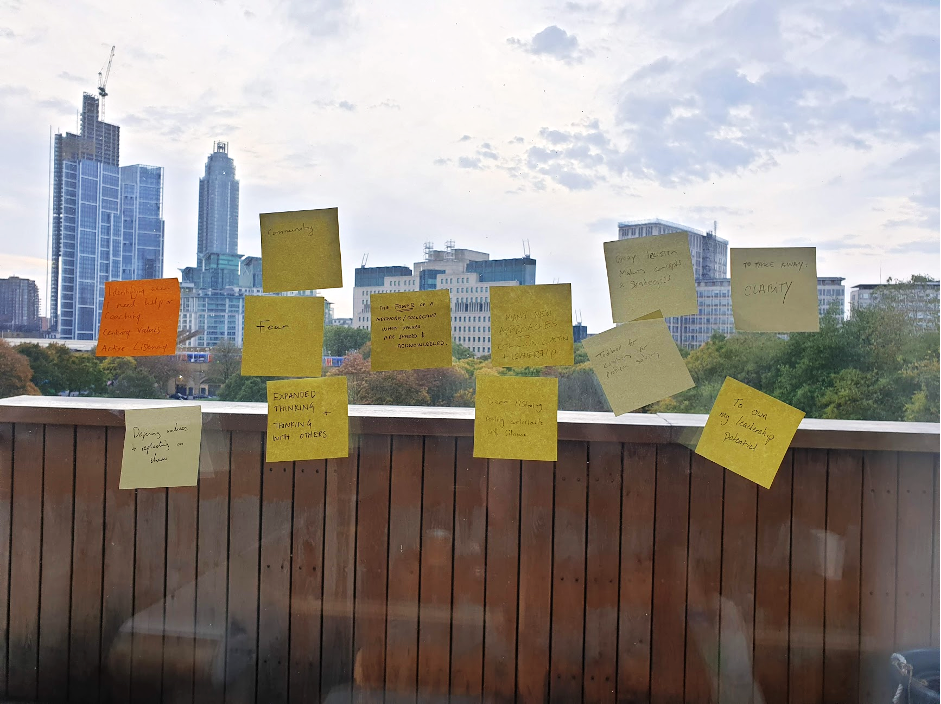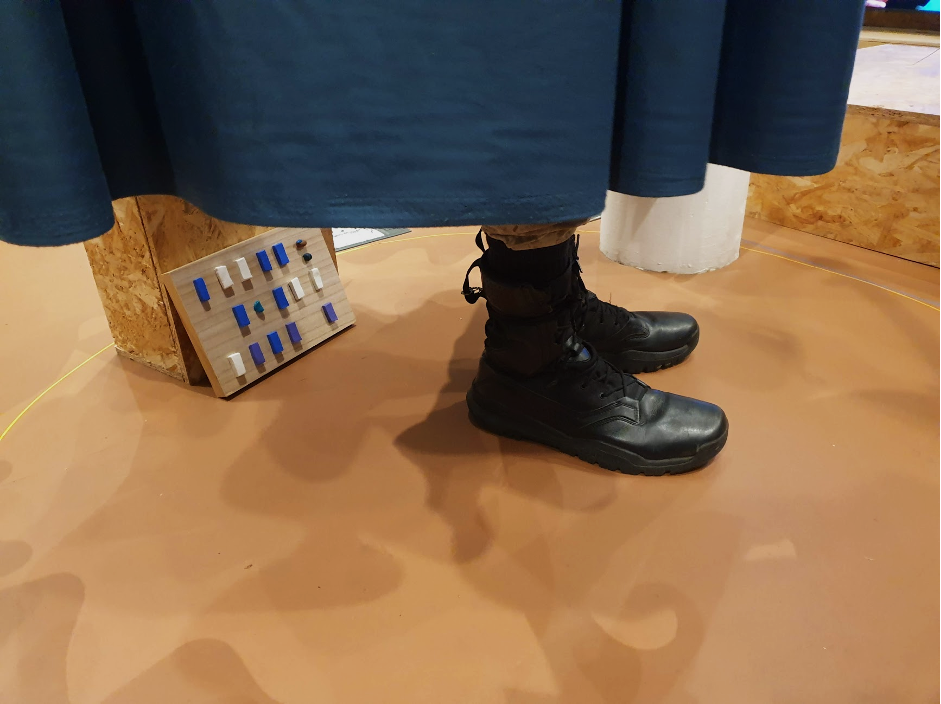Artist blog: forth floor reflections
Author: Lottie McCarthy
At Kennington Pleasure Gardens, the 10 of us met for the first time in the incredible 130 Tyer Street building, with thanks to Charles Asprey. Inside a building that is itself a work of art, we spent a week building ourselves. Carving a space in the world for your art and for yourself comes with challenges, and this week felt like an antidote, a balm of inspiration and connection . This came about through a group of exceptional artists chosen for the first cohort as well as the awe-inspiring mentors and role models who shared their time with us.
Putting into practice tools like non-violent communication, we shared our worries instead of puffing up our wins and connected through vulnerability. An embodiment of a new way of being and of what can happen when we stop pretending we are professional and perfect. This landed during a tumultuous time in the world and in my own life. I was particularly sensitive and was held with love and care by people who didn’t know me but allowed me to take refuge in connection, conversation, and inspiration. What a wonderful refuge to have had.

Some of our many post-its
A huge lesson we each took was understanding just how much we have to offer. It takes drive and passion and grit but our art can create change and meaning. What struck me during our conversations with Adele Patrick was the importance of us claiming and using our power whilst stepping into and asserting our values. The word leader has been made a dirty one, we shy away from it because the leaders and leadership models we have to tolerate represent much of what we make art to fight against but doing so disempowers us. Instead, we can look to feminist leadership models and commit to being accountable values-led practitioners. I can’t describe this better than by referring you to our Manifesto, spearheaded by fellow artist Kat Hudson who expertly wove our discussions into coherence:

With Viviana Checchia we discussed her self-confessed obsession with socially engaged art and how we shouldn’t make art without a strong social catalyst leading to action. Instead of a bronze statue on a plinth or a traditional exhibition, we can be creative about how projects involve people, share ideas, and create change.
Gary Butler shared stories of Turner, architecture, and art as architecture; where artists are envisioners of the world and a page or a building can represent something beyond itself. One day I hope to call my own home a work of art.

Turner’s Sketchbook brought by Gary
Shepherd Manyika joined us for a site visit come coffee morning to support our speculative brief at Broad Street in Teddington. His practice is interested in memory and revisiting his childhood through art, which I realised is true for my own art but I hadn’t described it as coherently, so it was wonderful to be joined by Jenna Davies later in the week who advised us on communicating our stories.
Daniel Crate not only shared his wisdom from the legal world, giving us a whistle stop tour of what we need to know to protect ourselves, our art, and the project we work on, but also brought Briffa’s early career solicitors to meet us too, a great demonstration of the values we were cultivating in sharing opportunities.
Laura Da Silva Gomes and Morgane Lirette discussed the nuanced issues surrounding the environmental impact of art, and the best ways to influence positive change. We were challenged to consider when and how work should be made to last the test of time vs when letting it go it best; does everything have to last forever?
Shape Art’s Elinor Hayes provoked discussions on accessibility as an art form. By using constraints as an opportunity for creativity, why can’t the accessible versions of art be as creative as the art itself? We spoke of audio descriptions inside phone boxes that could give more details when interacted with, and scale models to touch that incorporate context.
Visiting Antony Gormley’s studio brought me a new experience with his work and its relationship with Vipassana meditation (having just completed a course myself), I could relate to the concepts of porosity of the body and anicca (impermanence) captured in his work in a new way.
A week later we came back together, supported by Stella Toonen who curated our thoughts and musings into a celebration of the creative possibilities for Broad Street that embody the values established for Art School Plus. Held at Metropolitan Works, the architects working to improve Broad Street, it was very special to share with each other and the public our week of personal growth, artistic connection, and creative development.

The feet of Toby Tobias Kidd
I’m excited for our next steps. Ella Snell has brought together a brilliant group of artists and thinkers, and provided us such care, I’m honoured to be on the journey with this collective.